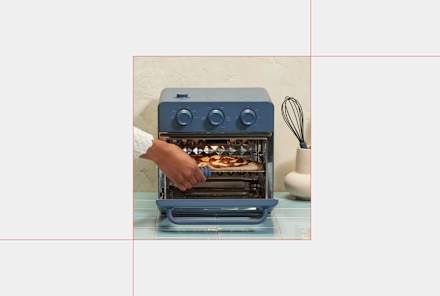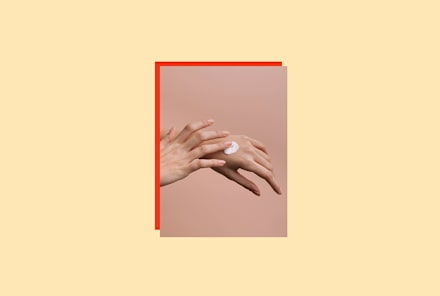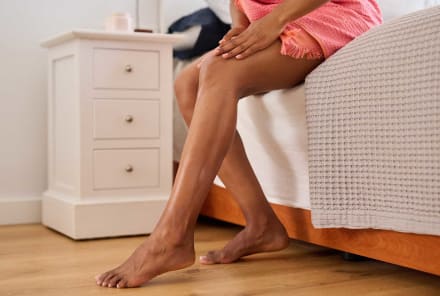Advertisement
Mildew Vs. Mold: How To Treat & Prevent Both At Home

I'm here today to solve the biggest debate in bathroom cleaning history: Is it mold, or is it mildew? The answer is that it's probably both. At the end of the day, mildew is just another type of mold—and it can be just as harmful if not properly treated. Here's what to know.
What is mold?
Mold is a type of fungi that has a roots-like system, called hyphae1, which physically grows into porous building materials such as drywall or insulation. Mold needs water to thrive, and can develop within 24 to 48 hours of water exposure. It comes in all sizes, shapes, textures, and colors.
What is mildew?
Mildew often refers to a type of white or gray mold that is light and color and powdery in texture. Aspergillus is a common type of mildew that can produce toxins called mycotoxins2, which can spur allergy-like symptoms.
Mycotoxins have also been associated with neurological and neuropsychiatric symptoms2 including pain syndromes, movement disorders, delirium, and disorders of balance and coordination.
It's a common but potentially harmful mildew that we see often in the remediation industry throughout the home—mostly on windows and surrounding frames and sills; on doors and frames leading outside; under bath mats; on shower curtains, often between the liner and the curtain; and on bathroom grout or caulk.
Connecting the dots, it's better to err on the side of caution when you have what looks like mildew growing in your home.
How to get rid of mold & mildew.
It's important that we are really careful about how we respond to mold and mildew in our homes. If you see what you think is mildew or mold on your shower curtain, bath rug, etc., it's time to take action!
When and how to clean it yourself:
If you spot a one-off case of mildew on hard, nonporous surfaces like metal or glass, you can simply spray it with a mold remover (I recommend this one) and wipe the area down with a microfiber cloth.
Since these areas are enclosed, the roots (hyphae) of mold will not have a chance to grow into them, so a quick clean should take care of things. Always be sure to discard the microfiber towel when you are done. Yep, do not wash it; discard it!
If you spot mildew on surfaces that are semi-porous such as hardwood, you might need to sand the area down to fully remove the rootlike structures of mold. Otherwise, you run the risk of it easily growing back. (Think of mold as a weed: If you just remove the stem, it will continue to grow back. You have to get rid of the roots, too.)
For mildew on textiles, you have two options: Either clean them with a fabric cleaner that can remove mold (this is the one I recommend) or replace them.
When to call in a professional:
All molds and mildews produce by means of spores. When those spores find an opportunity to grow where there is water or moisture, they will do so.
So if you have mold perpetually growing in your bathroom, it often means you have mold elsewhere in the home that is getting aerosolized and finding the perfect opportunity to grow in that damp space.
For that reason, I always recommend having your home inspected by a licensed mold inspector if you have mold or mildew perpetually growing anywhere inside, including the bathroom. Be sure to choose an inspector who focuses solely on mold.
How to prevent mold & mildew.
Here are a few quick tips to help prevent mold and mildew from growing:
- Crack the door or window open when showering to allow enough air into the room when using the exhaust fan. This will help the exhaust fan run more effectively.
- Ensure your bath mat dries properly after each use. Hanging it over the tub to dry works well. Washing it once a week will also help keep any mold and/or bacteria from forming.
- After showers, place the shower liner inside the tub and the shower curtain outside the tub to allow both sides of the liner and curtain to dry properly. Separating your shower liner and curtain can prevent moisture from getting trapped between them.
- Monitor humidity levels inside the home. Humidity that's above 60% can allow enough moisture for mold to grow.
- Check windows and doors once a year to ensure they are well sealed, and don't have any air gaps where condensation can form.
The bottom line.
Mildew is a type of mold that can be dangerous if left on its own. Treat mildew with the same seriousness that you would treat mold, and you'll keep it from potentially getting worse over time.
Watch Next
Enjoy some of our favorite clips from classes
Enjoy some of our favorite clips from classes
What Is Meditation?
Mindfulness/Spirituality | Light Watkins
Box Breathing
Mindfulness/Spirituality | Gwen Dittmar
What Breathwork Can Address
Mindfulness/Spirituality | Gwen Dittmar
The 8 Limbs of Yoga - What is Asana?
Yoga | Caley Alyssa
Two Standing Postures to Open Up Tight Hips
Yoga | Caley Alyssa
How Plants Can Optimize Athletic Performance
Nutrition | Rich Roll
What to Eat Before a Workout
Nutrition | Rich Roll
How Ayurveda Helps Us Navigate Modern Life
Nutrition | Sahara Rose
Messages About Love & Relationships
Love & Relationships | Esther Perel
Love Languages
Love & Relationships | Esther Perel


















